GO — Project structure
I started programming using Golang for real this year (2022), and the thing I immediately did was look for references on what would be the best way to evolve my structure for the project. This post will be just one of many others that talk about the same subject, and, perhaps that's why I decided to write it.
Firstly, golang is already completely different in the way it deals with folders/packages, and, to improve, it has a very opinionated essence, with many official docs informing what the “goway” way of doing something would be (full of not me touch), however, in the way you organize your files and folders, there isn't really a direction, so everyone kind of gives their own interpretation of the world to this part.
I will divide this post into 3 references and then show how the mix of these references turned out in the project.
First reference
A complex system that works invariably evolved from a simple system that worked.
-- Gall's Law
For small applications, the project structure must be simple.
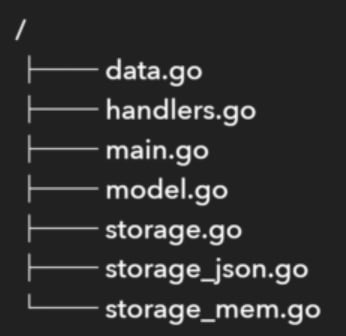
Second reference
The “community” did a survey of a set of historical and emerging design layout patterns common in the Go ecosystem. There are a lot of cool things in this survey, but what caught my attention were the /cmd and /internal folders.
/cmd
Main applications for this project.
The directory name for each application must match the name of the executable you want to have (e.g. /cmd/myapp).
/internal
Private application and library code. This is code that you don't want others to import into their applications or libraries. Note that this layout pattern is imposed by the Go compiler itself.
Third reference
Architectures that better separate the “details” from what really delivers value.
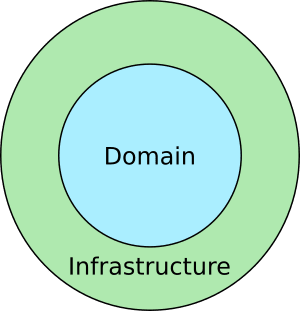
Result
For a simple application I try to keep it simple, however, when the scope gets a little larger, I try to make a slight differentiation between what is “core”/domain and what is detail/infrastructure.

Note that in cmd I don't have the tuttipet folder, as the reference project suggests. At first I tried to use the suggested pattern, but as this API already came out with a command line interface and a provider for terraform I decided to leave it this way.
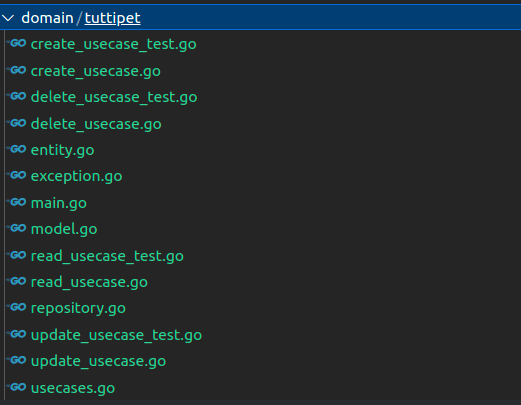
Take a quick zoom in on the core. I try to be simplistic here and not create folders. I only maintain 1 point of contact with the external world (main.go), whatever is generalized has its own file and whatever is not remains within its context, simple.
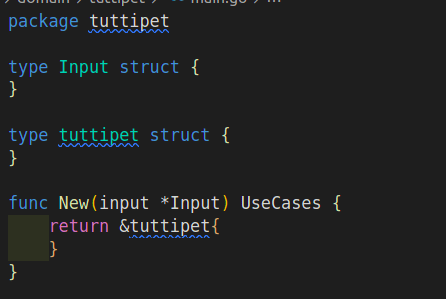
With tuttipet.New (short, concise and evocative) the “dirty” layer can interact with the usecases (I find the word usecase easier to assimilate than interactor)
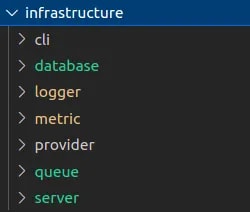
Take a quick zoom in on the details. Here are simply the tools by which the domain will achieve its success.
Conclusion
I'm still weak in the path that Golang offers, still trying to figure out what can be done with it, however, even though I don't like the Go way of doing some things, it has proven to be quite simple and robust.
Summary, trying to keep it simple when possible and if it gets too complex... I'll go back to the drawing board.
Other references
https://dev.to/booscaaa/implementando-clean-architecture-com-golang-4n0a
https://github.com/golang-standards/project-layout
https://blog.boot.dev/golang/golang-project-structure/
https://github.com/bnkamalesh/goapp
https://www.wolfe.id.au/2020/03/10/how-do-i-structure-my-go-project/
https://blog.logrocket.com/flat-structure-vs-layered-architecture-structuring-your-go-app/
https://developer20.com/how-to-structure-go-code/
https://dev.to/jinxankit/go-project-structure-and-guidelines-4ccm
https://github.com/bxcodec/go-clean-arch
https://golangexample.com/example-go-clean-architecture-folder-pattern/
https://www.calhoun.io/flat-application-structure/
https://go.dev/doc/effective_go#names
https://go.dev/blog/package-names
Original post: https://medium.com/@espigah/go-layout-do-projeto-18aacce8089d
-
 10 recommended online custom GIF production toolsIn this post, we’ve collected 10 free online gif maker tools to make your own custom AJAX loaders . Easy to create your own simply upload your images...Programming Posted on 2025-04-19
10 recommended online custom GIF production toolsIn this post, we’ve collected 10 free online gif maker tools to make your own custom AJAX loaders . Easy to create your own simply upload your images...Programming Posted on 2025-04-19 -
 Why HTML cannot print page numbers and solutionsCan't Print Page Numbers on HTML Pages?Problem Description:Despite researching extensively, page numbers fail to appear when printing an HTML docu...Programming Posted on 2025-04-19
Why HTML cannot print page numbers and solutionsCan't Print Page Numbers on HTML Pages?Problem Description:Despite researching extensively, page numbers fail to appear when printing an HTML docu...Programming Posted on 2025-04-19 -
 How Do I Efficiently Select Columns in Pandas DataFrames?Selecting Columns in Pandas DataframesWhen dealing with data manipulation tasks, selecting specific columns becomes necessary. In Pandas, there are va...Programming Posted on 2025-04-19
How Do I Efficiently Select Columns in Pandas DataFrames?Selecting Columns in Pandas DataframesWhen dealing with data manipulation tasks, selecting specific columns becomes necessary. In Pandas, there are va...Programming Posted on 2025-04-19 -
 Solve MySQL error 1153: Packet exceeds 'max_allowed_packet' limitMySQL Error 1153: Troubleshooting Got a Packet Bigger Than 'max_allowed_packet' BytesFacing the enigmatic MySQL Error 1153 while importing a d...Programming Posted on 2025-04-19
Solve MySQL error 1153: Packet exceeds 'max_allowed_packet' limitMySQL Error 1153: Troubleshooting Got a Packet Bigger Than 'max_allowed_packet' BytesFacing the enigmatic MySQL Error 1153 while importing a d...Programming Posted on 2025-04-19 -
 How to efficiently detect empty arrays in PHP?Checking Array Emptiness in PHPAn empty array can be determined in PHP through various approaches. If the need is to verify the presence of any array ...Programming Posted on 2025-04-19
How to efficiently detect empty arrays in PHP?Checking Array Emptiness in PHPAn empty array can be determined in PHP through various approaches. If the need is to verify the presence of any array ...Programming Posted on 2025-04-19 -
 How Can I Execute Multiple SQL Statements in a Single Query Using Node-MySQL?Multi-Statement Query Support in Node-MySQLIn Node.js, the question arises when executing multiple SQL statements in a single query using the node-mys...Programming Posted on 2025-04-19
How Can I Execute Multiple SQL Statements in a Single Query Using Node-MySQL?Multi-Statement Query Support in Node-MySQLIn Node.js, the question arises when executing multiple SQL statements in a single query using the node-mys...Programming Posted on 2025-04-19 -
 How to Convert a Pandas DataFrame Column to DateTime Format and Filter by Date?Transform Pandas DataFrame Column to DateTime FormatScenario:Data within a Pandas DataFrame often exists in various formats, including strings. When w...Programming Posted on 2025-04-19
How to Convert a Pandas DataFrame Column to DateTime Format and Filter by Date?Transform Pandas DataFrame Column to DateTime FormatScenario:Data within a Pandas DataFrame often exists in various formats, including strings. When w...Programming Posted on 2025-04-19 -
 How can I safely concatenate text and values when constructing SQL queries in Go?Concatenating Text and Values in Go SQL QueriesWhen constructing a text SQL query in Go, there are certain syntax rules to follow when concatenating s...Programming Posted on 2025-04-19
How can I safely concatenate text and values when constructing SQL queries in Go?Concatenating Text and Values in Go SQL QueriesWhen constructing a text SQL query in Go, there are certain syntax rules to follow when concatenating s...Programming Posted on 2025-04-19 -
 How to upload files with additional parameters using java.net.URLConnection and multipart/form-data encoding?Uploading Files with HTTP RequestsTo upload files to an HTTP server while also submitting additional parameters, java.net.URLConnection and multipart/...Programming Posted on 2025-04-19
How to upload files with additional parameters using java.net.URLConnection and multipart/form-data encoding?Uploading Files with HTTP RequestsTo upload files to an HTTP server while also submitting additional parameters, java.net.URLConnection and multipart/...Programming Posted on 2025-04-19 -
 How to optimize PHP file transfer performance in X-SendFile?Harnessing the X-SendFile Header for Blazing-Fast File ServingIn the realm of PHP web development, the quest for swift and efficient file serving reig...Programming Posted on 2025-04-19
How to optimize PHP file transfer performance in X-SendFile?Harnessing the X-SendFile Header for Blazing-Fast File ServingIn the realm of PHP web development, the quest for swift and efficient file serving reig...Programming Posted on 2025-04-19 -
 Tips for saving pictures from PHP URL to your local computerSaving Images from PHP URLsSaving images from PHP URLs to your local computer can be a useful task for various applications. Here's how to achieve...Programming Posted on 2025-04-19
Tips for saving pictures from PHP URL to your local computerSaving Images from PHP URLsSaving images from PHP URLs to your local computer can be a useful task for various applications. Here's how to achieve...Programming Posted on 2025-04-19 -
 Why Does Microsoft Visual C++ Fail to Correctly Implement Two-Phase Template Instantiation?The Mystery of "Broken" Two-Phase Template Instantiation in Microsoft Visual C Problem Statement:Users commonly express concerns that Micro...Programming Posted on 2025-04-19
Why Does Microsoft Visual C++ Fail to Correctly Implement Two-Phase Template Instantiation?The Mystery of "Broken" Two-Phase Template Instantiation in Microsoft Visual C Problem Statement:Users commonly express concerns that Micro...Programming Posted on 2025-04-19 -
 How to select elements by attributes when querySelectorAll is not available?How to Retrieve Elements by Attribute When querySelectorAll is UnavailableDespite its prevalence, the querySelectorAll method may not be universally a...Programming Posted on 2025-04-19
How to select elements by attributes when querySelectorAll is not available?How to Retrieve Elements by Attribute When querySelectorAll is UnavailableDespite its prevalence, the querySelectorAll method may not be universally a...Programming Posted on 2025-04-19 -
 How to extract elements from 2D array? Using another array's indexUsing NumPy Array as Indices for the 2nd Dimension of Another ArrayTo extract specific elements from a 2D array based on indices provided by a second ...Programming Posted on 2025-04-19
How to extract elements from 2D array? Using another array's indexUsing NumPy Array as Indices for the 2nd Dimension of Another ArrayTo extract specific elements from a 2D array based on indices provided by a second ...Programming Posted on 2025-04-19 -
 Why Does PHP's DateTime::modify('+1 month') Produce Unexpected Results?Modifying Months with PHP DateTime: Uncovering the Intended BehaviorWhen working with PHP's DateTime class, adding or subtracting months may not a...Programming Posted on 2025-04-19
Why Does PHP's DateTime::modify('+1 month') Produce Unexpected Results?Modifying Months with PHP DateTime: Uncovering the Intended BehaviorWhen working with PHP's DateTime class, adding or subtracting months may not a...Programming Posted on 2025-04-19
Study Chinese
- 1 How do you say "walk" in Chinese? 走路 Chinese pronunciation, 走路 Chinese learning
- 2 How do you say "take a plane" in Chinese? 坐飞机 Chinese pronunciation, 坐飞机 Chinese learning
- 3 How do you say "take a train" in Chinese? 坐火车 Chinese pronunciation, 坐火车 Chinese learning
- 4 How do you say "take a bus" in Chinese? 坐车 Chinese pronunciation, 坐车 Chinese learning
- 5 How to say drive in Chinese? 开车 Chinese pronunciation, 开车 Chinese learning
- 6 How do you say swimming in Chinese? 游泳 Chinese pronunciation, 游泳 Chinese learning
- 7 How do you say ride a bicycle in Chinese? 骑自行车 Chinese pronunciation, 骑自行车 Chinese learning
- 8 How do you say hello in Chinese? 你好Chinese pronunciation, 你好Chinese learning
- 9 How do you say thank you in Chinese? 谢谢Chinese pronunciation, 谢谢Chinese learning
- 10 How to say goodbye in Chinese? 再见Chinese pronunciation, 再见Chinese learning

























